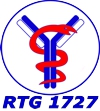Antibody transfer model of EBA
An antibody-transfer of epidermolysis bullosa acquisita (EBA) was originally developed in 2005 (J Clin Invest, 2005). The disease is induced by repetetive injections of rabbit anti-mouse type VII antibodies into susceptible adult mouse strains. Within 2-4 days skin lesions develop. In addition to skin lesions, tissue injury is also induced throughout the entire gut (J Pathol, 2011). Overall, this model is ideally suited to investigate autoantibody-induced tissue injury in vivo. Induction of clinical skin lesion depends on:
- neutrophils (J Pathol, 2007)
- reactive oxygen species (J Pathol, 2007)
- adhesion molecules; e.g. CD18 (J Pathol, 2007)
- complement activation (J Immunol, 2007)
- Fc gamma receptors (J Clin Invest, 2005)
- PI3K beta signaling (Sci Signal, 2011)
- Fc gamma receptor 4 (J Pathol, 2012)
The following therapeutic interventions lead to disease improvement:
- Enzymatic autoantibody glycan hydrolysis (EndoS) (J Autoimmun, 2012)
Contact(s): Detlef Zillikens, Enno Schmidt, Ralf Ludwig
Immunization-induced EBA
Experimental EBA can also be induced in susceptible mouse strains by either single (J Invest Dermatol, 2010) or repetative (J Immunol, 2006) immunization with an immunodominant fragment located within type VII collagen NC1 domain. Disease induction requires:
- T cells ( J Immunol, 2010)
- MHC haplotype (J Invest Dermatol, 2010)
- Th1 polarization (J Immunol, 2011)
- non-MHC genes (J Invest Dermatol, 2012)
The following therapeutic interventions lead to disease improvement:
- HSP90 inhibition (Blood, 2011)
- Enzymatic autoantibody glycan hydrolysis (EndoS) (J Autoimmun, 2012)
Contact(s): Detlef Zillikens, Enno Schmidt, Ralf Ludwig

- Model systems
- Mouse models for epidermolysis bullosa acquisita
- Mouse strains
- Antibodies and unique reagents


